Remote Learning Initiatives in Chhattisgarh
Remote Learning Initiatives in Chhattisgarh
The Department of School Education, Government of Chhattisgarh has been making strides in EdTech since a long time. The release of the platform – ‘PadhaiTunharduvaar’ (Education at your doorstep) is a post-covid initiative. The objective of this platform is to connect teachers and students by providing access to good quality educational content from the comfort of their homes. Post CoVID 19, it has become necessary that children should be provided the opportunity to read, write and learn, while staying in their homes. The School Education department of Chhattisgarh Government has launched this platform in the interest of the students. With this, students will now be able to continue their studies on the e-platform through a mix of content like LIVE Classes, offline video lectures, simulations, animations, worksheets, podcasts etc.
Chhattisgarh has been a very proactive state with respect to implementing Technology as it provides a level playing field to all its beneficiaries. To ensure access, equity and quality of teaching and learning, the department has implemented several digital initiatives. In this report we look at some of these initiatives and how it has helped the students and teachers.
Some of the flagship EdTech initiatives launched by the state are as below:
- PadhaiTunharDuvaar (PTD)
- DIKSHA
- DiGiDuniya (ICT at Schools
Padhai Tunhar Duvaar (Education at your doorstep)
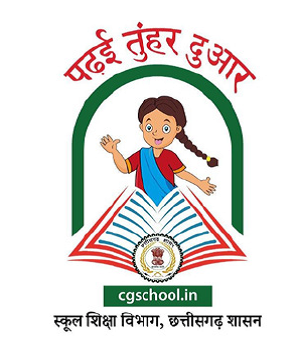
The objective of this initiative is to connect teachers and students by providing access to good quality educational content from the comfort of their homes. Post CoVID 19, it has become necessary that children should be provided the opportunity to read, write and learn, while staying in their homes. Through this program students are now able to continue their studies on the e-platform through a mix of content like LIVE Classes, offline video lectures, simulations, animations, worksheets, podcasts etc.
Some of the program highlights are as below:
Virtual Schools: The department has worked on creating around 45000+ virtual schools, where the teachers of the same school engage with their students and provide them teaching and learning material on a daily basis. In addition to this, the teachers also guide the students in solving the homework which is uploaded on the portal. In this way, children are also being given homework for home study.
Once a student completes homework, he/she can take a photo and simply tap a button to upload it on the portal and the teacher reviews it using the annotation tools available on the portal and sends it back to the students. In this way, students now focus on their studies to overcome their weaknesses in subjects while staying at home.

Audio bridge classrooms: In many rural areas, internet connectivity 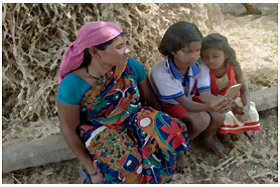 and smartphones availability is still a challenge. In order to make online learning a level playing field, the department has taken proactive steps to ensure that the students are also able to connect via feature phones or landline, without the need for any Smartphone or internet. The students can now attend the LIVE classes and raise doubts. The audio video content is also broadcasted LIVE on the official YouTube Channel name (PTD Chhattisgarh) so that students from other Hindi/English speaking States can also view and learn from the classes being held.
and smartphones availability is still a challenge. In order to make online learning a level playing field, the department has taken proactive steps to ensure that the students are also able to connect via feature phones or landline, without the need for any Smartphone or internet. The students can now attend the LIVE classes and raise doubts. The audio video content is also broadcasted LIVE on the official YouTube Channel name (PTD Chhattisgarh) so that students from other Hindi/English speaking States can also view and learn from the classes being held.
Crowd sourcing of e-content: The department of School Education 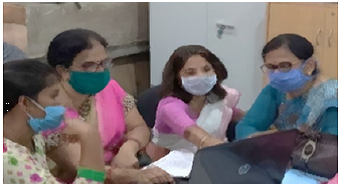 has taken serious steps on crowd sourcing of content from teachers, NGOs and other content development firms at zero cost. The idea is to provide a mixed variety of joyful learning material to our students. Once the content is uploaded, they are very carefully reviewed by the experts and only after the approval; the content is visible to the students. As on date, the portal has garnered more than 18,500 crowdsourced audio video content, in addition to this, it also has 1000+ image-based activity sheets, course material, audio (MP3) based content. In addition to this, more than 1500+ hours of LIVE lectures have been delivered in 13,000+ sessions through the portal which has been attended by approximately 12,00,000+ participants from class 1-12. These features have helped the teachers and students to connect from their homes without the need for traveling outside for various subjects ranging from class 1-12.
has taken serious steps on crowd sourcing of content from teachers, NGOs and other content development firms at zero cost. The idea is to provide a mixed variety of joyful learning material to our students. Once the content is uploaded, they are very carefully reviewed by the experts and only after the approval; the content is visible to the students. As on date, the portal has garnered more than 18,500 crowdsourced audio video content, in addition to this, it also has 1000+ image-based activity sheets, course material, audio (MP3) based content. In addition to this, more than 1500+ hours of LIVE lectures have been delivered in 13,000+ sessions through the portal which has been attended by approximately 12,00,000+ participants from class 1-12. These features have helped the teachers and students to connect from their homes without the need for traveling outside for various subjects ranging from class 1-12.
Raise hand (Ask questions): The portal also has a feature where the students can post their questions/doubts pertaining to the subject they are learning. These are then assigned to respective teachers and an answer is sent to the student within 24- 48 hours. An SMS notification is also sent out to the student and teacher whenever a question is raised or answered. Regular monitoring is also being carried out by the state to ensure no question goes unanswered. This way, all doubts pertaining to studies and personal guidance is remotely being supported by the teachers. All the content is also being mapped to the Learning Outcomes and a helpline number has been provided on the portal www.cgschool.in for any technical support.
Jugaad Studio: To promote low cost, high quality content, the teachers are setting up a Jugaad Studio in their schools and homes. The first prototype of the Jugaad Studio was launched at DIET and CTE in 2020. Through proper planning, teachers are invited on a daily basis and recording is made with the help of the technical team. A YouTube Channel is also set up where all the videos are available for teachers with respect to technical support. To set up a Jugaad Studio, a teacher needs to have any smartphone, earphone/collar mic & a mobile tripod. Some knowledge on building a ppt serves as an added advantage. In order to promote the usage of FOSS (Free and Open source tools), training videos are made and uploaded on our official YouTube channel and Portal.

Motor iskool: To provide a face to face learning program, the 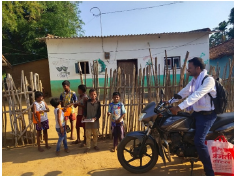 department is also mulling over developing a mobile, motor iskool, wherein selected teachers will take the responsibility of traveling to remote locations across the state and conduct classes for kids in their own settlement areas. Mobile connectivity and device availability are still a large challenge for a lot of students, hence this type of makeshift arrangement will help the students immensely. The essential duty of a teacher will be to teach a concept, conduct activities in group, assign homework to students and ensure that the homework is evaluated and given to the students on the spot. The teacher will also use loudspeakers and his smartphone for playing relevant content for the students.
department is also mulling over developing a mobile, motor iskool, wherein selected teachers will take the responsibility of traveling to remote locations across the state and conduct classes for kids in their own settlement areas. Mobile connectivity and device availability are still a large challenge for a lot of students, hence this type of makeshift arrangement will help the students immensely. The essential duty of a teacher will be to teach a concept, conduct activities in group, assign homework to students and ensure that the homework is evaluated and given to the students on the spot. The teacher will also use loudspeakers and his smartphone for playing relevant content for the students.
Special Set up for Outreach and communication: The department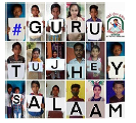 of School Education has also set up a State media cell based out of SCERT that looks after outreach and communication activities for key EdTech initiatives of the state. Through regular feedback, the department is also working on promoting usage of the platform across the state. Recently the state organized a Pan-state campaign ‘Guru Tujhe Salaam’. The objective of this program is to inculcate a sense of gratitude and thankfulness towards the teachers for their serious commitment and dedication Pre and post-CoVID period expressing their fond memories of their teachers using ‘Aha moment’. This activity is widely carried out across 2000+ clusters in Chhattisgarh.
of School Education has also set up a State media cell based out of SCERT that looks after outreach and communication activities for key EdTech initiatives of the state. Through regular feedback, the department is also working on promoting usage of the platform across the state. Recently the state organized a Pan-state campaign ‘Guru Tujhe Salaam’. The objective of this program is to inculcate a sense of gratitude and thankfulness towards the teachers for their serious commitment and dedication Pre and post-CoVID period expressing their fond memories of their teachers using ‘Aha moment’. This activity is widely carried out across 2000+ clusters in Chhattisgarh.
Loudspeaker School: In many parts of the rural Chhattisgarh, community involvement is very high when it comes to education. In a lot of villages, where connectivity is a major challenge, the teachers have collaborated with local community/panchayat for getting loudspeakers and relaying audio lessons. When the rhymes or story starts playing on the loudspeaker, the student find it extremely irresistible and go in a group and sit to listen to the items being played. This way, instead of playing movie songs, the community is encouraging to play educational audio recordings such that students can be benefitted.
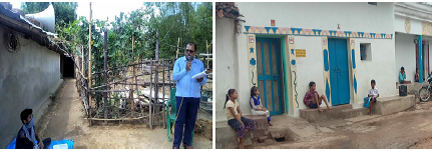
Social media for supporting PLCs: In order to boost a collaborative learning, the teachers have voluntarily set up professional learning communities. These PLCs are open to anybody and anybody can exchange good practices that can be implemented to improve the efficacy of teaching pedagogies. In order to break the barrier of geographical restrictions, these PLCs are also making optimum utilization of social media to reach out to wider teacher community groups across the state and the nation. Currently there are more than 5,400 active PLCs in the state. On an average there are 80-100 teachers connected to each PLC.
Social media for supporting PLCs: In order to boost a collaborative learning, the teachers have voluntarily set up professional learning communities. These PLCs are open to anybody and anybody can exchange good practices that can be implemented to improve the efficacy of teaching pedagogies. In order to break the barrier of geographical restrictions, these PLCs are also making optimum utilization of social media to reach out to wider teacher community groups across the state and the nation. Currently there are more than 5,400 active PLCs in the state. On an average there are 80-100 teachers connected to each PLC.
Monthly discussion paper: In order to provide a unified platform for teachers to exchange ideas, thoughts, conduct survey and share creative inputs, the state has also been proactive in making a monthly discussion paper called ‘Charcha Patra’. The charcha Patra is published every month centrally from the state using zero budget. The charcha Patra is by the teachers and for the teachers. The sample charcha Patra can be viewed on this link: http://www.ssachhattisgarh.gov.in/pedagogy.php
Gamified Assessment solution: The department has collaborated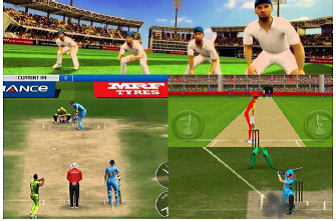 with NIC to create many gamified assessment solutions. It is commonly observed that students tend to spend a lot of time on mobile games. The idea was to apply the same the gamification theory for learning. For this, the a set of 1,00,000 question bank was created. Each question was tagged to NCERT defined Learning Outcomes and then they were rendered into small games. Online Cricket was taken chosen as the first game, where students can choose various avatars and challenge other students for a match. When the game starts, a toss is made and the batsman or fielder is decided. Depending upon this, random questions are thrown on the batsman and he/she has to answer the objective type question in a pre-decided timeframe. If the answer is correct the ball goes for a six, if it is wrong, the batsman is declared out. The right answer with explanation is given at the end of the question. This way, the runs are scored and students find it very interesting to play and score runs. But the real intent is that students understand and learn through assessments. Similarly, the department is working with NIC in releasing a game called KBC- Kaun Banega Champion, in the similar fashion of the famous Quiz show- Kaun Banega Crorepati.
with NIC to create many gamified assessment solutions. It is commonly observed that students tend to spend a lot of time on mobile games. The idea was to apply the same the gamification theory for learning. For this, the a set of 1,00,000 question bank was created. Each question was tagged to NCERT defined Learning Outcomes and then they were rendered into small games. Online Cricket was taken chosen as the first game, where students can choose various avatars and challenge other students for a match. When the game starts, a toss is made and the batsman or fielder is decided. Depending upon this, random questions are thrown on the batsman and he/she has to answer the objective type question in a pre-decided timeframe. If the answer is correct the ball goes for a six, if it is wrong, the batsman is declared out. The right answer with explanation is given at the end of the question. This way, the runs are scored and students find it very interesting to play and score runs. But the real intent is that students understand and learn through assessments. Similarly, the department is working with NIC in releasing a game called KBC- Kaun Banega Champion, in the similar fashion of the famous Quiz show- Kaun Banega Crorepati.
Multimedia Textbooks: SCERT has developed Multimedia Textbooks, the idea behind this was to bring textbooks to life. In MMT, a textbook speaks for real through TTS engine and there are tons of experiments which are shot in professional studio of SCERT. Students can now watch experiments come to life, which are normally given in textual/pictorial format in the textbooks.
Edusat: SCERT has set up 330 Edusat center across the state where ICT based learning is delivered. These centers are connected to satellites and direct to classroom lectures are made. These Edusat centers are not only used by students, but also by teachers for many capacity building and skill development programs.
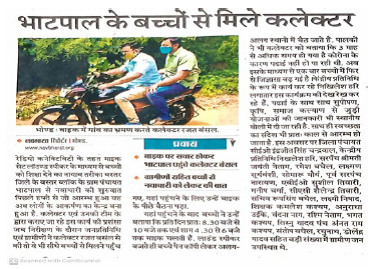 Safe internet practices: As the learning goes online, the department has taken serious measures to ensure there are safe learning environment for students and teachers. Many times, teachers and students social bullying and it becomes a very difficult situation since such miscreants are mostly unknown and non-treatable. Preventive solution is the best way to combat such elements. Also, many times students get lost on their way to browsing. For this, the department has created lots of ‘Do you know’ and ‘Safety first’ videos where teachers, students and parents have been taught to use safe practices while using internet. All of these instructional videos are available of the state YouTube channel: PTD Chhattisgarh.
Safe internet practices: As the learning goes online, the department has taken serious measures to ensure there are safe learning environment for students and teachers. Many times, teachers and students social bullying and it becomes a very difficult situation since such miscreants are mostly unknown and non-treatable. Preventive solution is the best way to combat such elements. Also, many times students get lost on their way to browsing. For this, the department has created lots of ‘Do you know’ and ‘Safety first’ videos where teachers, students and parents have been taught to use safe practices while using internet. All of these instructional videos are available of the state YouTube channel: PTD Chhattisgarh.
DIKSHA (Digital Infrastructure for Knowledge sharing)
The objective of this initiative is to provide access to high quality connect created by teachers with the help of a QR coded energized on a textbook. The Department of School Education launched the DISKHA initiative in early 2018 with the printing of 4300+ QR codes planted in 67 titles of textbooks for classes 1 up to 10. A student basically scans the QR code and gets immediate access to the content without the need to spend time in browsing content as the entire content is contextually placed well within the textbooks. In addition to this, there are also practice assessment questions that are available at the end of the chapter, which the students can use to test their knowledge and improve their knowledge gaps.

Below are some vital stats with respect to content usage and consumption.
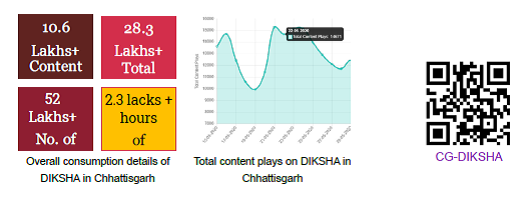
In order to promote the widespread usage of DIKSHA, SCERT has conducted many campaigns at ATL and BTL level which has resulted in wider adoption of DIKSHA in Chhattisgarh.
DiGiDuniya(ICT at schools)
The objective of these initiatives is to set up Digital Classrooms and Computer Labs for creating a meaningful digital experience by the integration and active adoption of technology tools in classroom practice for an improved teaching learning approach, teacher effectiveness and ultimately student performance in the classroom. This is helping to generate an active interest among students towards learning, foster learning with understanding, and build knowledge, competencies, attitudes, values and skills relevant in the functional world of work. Under this project 4330 government-run schools from all the 27 districts and more than 10, 00,000 students are being benefited.
Highlights of this initiative are as below
- 4330 schools have been covered under the ICT at Schools scheme.
- 10,00,000+ students across all 27 districts in CG will be directly benefited by this intervention
- Providing digital experience with new technology solutions for learning, to help in improving performance and impart skills to become future ready for competitive exams and employability.
- 1246 Schools will have ICT labs where students will have access to personalized adaptive learning and assessments.
- Content for class 1-12, also available in regional languages.
- A dedicated mobile app for accessing the high-quality content outside the classroom is being built.
- All content has been mapped to Chhattisgarh’s State board and NCERT prescribed Learning Outcomes.
- All teachers are also being trained for using ICT toolkits and developing e-content.
- Real time data of performance of students from the periodic analytics assessment for monitoring and evaluation has been provisioned.
- All schools with ICT Labs are being provided with technical support staff for assistance and training.
- All the content from DIKSHA, MultiMedia Text and other e-repository is also being made available for students and teachers.
In this way, the School Education Department has been making strides in improving the education landscape in the state for a holistic teaching and learning digital environment.
Source : India Report Digital Education
Last Modified : 12/17/2021
This topic provides information about Haryana.
This topic provides information about Remote Learn...
This topic provides information about Remote Learn...
Government of India's iGOT Karmayogi is a comprehe...
